Grow Purple Bush Beans and add a vibrant splash of color to your garden and your plate! Have you ever imagined harvesting beans so beautiful they look like they belong in an art gallery rather than a vegetable patch? Well, stop dreaming and start planting! This DIY guide is your ticket to cultivating these unique and delicious legumes right in your own backyard.
Beans, in general, have a rich history, dating back thousands of years and playing a crucial role in the diets of civilizations across the globe. While the common green bean is a staple, purple bush beans offer a delightful twist. Their striking color isn’t just for show; it’s packed with anthocyanins, powerful antioxidants that are great for your health.
But why should you specifically learn how to grow purple bush beans? Because they’re not only visually stunning and nutritious, but also incredibly easy to cultivate, even for beginner gardeners. I’m going to show you simple tricks and hacks that will ensure a bountiful harvest, even if you’ve struggled with gardening in the past. Imagine the satisfaction of serving a meal featuring beans you grew yourself – a conversation starter and a testament to your green thumb! Plus, who wouldn’t want to impress their friends and family with such a unique and colorful addition to their garden?
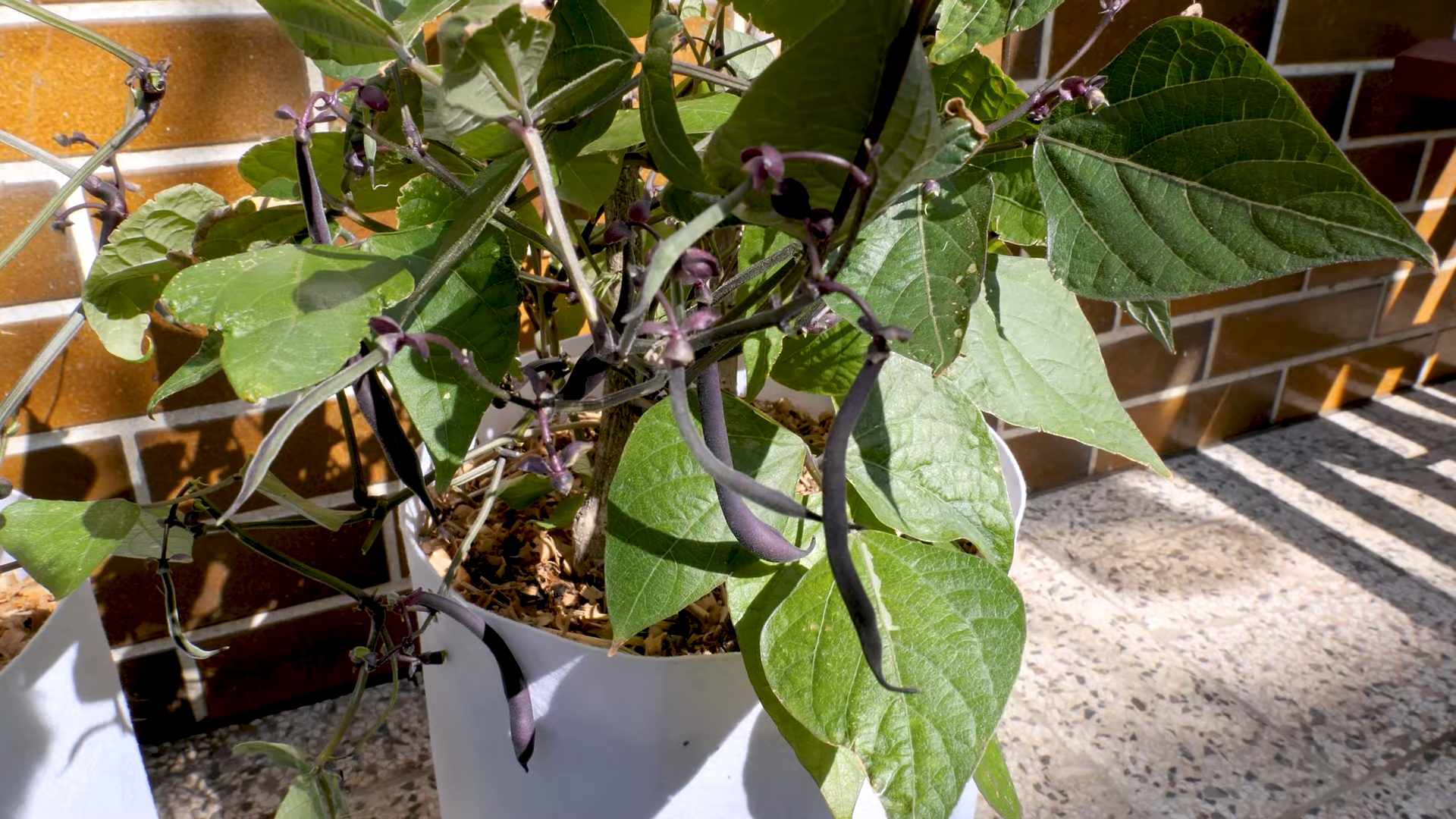
Growing Purple Bush Beans: A DIY Guide to a Vibrant Harvest
Okay, so you want to grow purple bush beans? Awesome choice! They’re not only delicious but also add a splash of color to your garden. I’ve grown them for years, and I’m excited to share my tips and tricks with you. This guide will walk you through everything, from choosing the right seeds to harvesting your beautiful purple bounty.
Choosing Your Purple Bush Bean Variety
First things first, let’s talk varieties. There are a few different types of purple bush beans you can choose from, each with its own unique characteristics.
* Royal Burgundy: This is probably the most popular variety. It’s known for its deep purple pods and excellent flavor. Plus, it’s a reliable producer.
* Purple Queen: As the name suggests, this variety boasts vibrant purple pods. It’s also a good choice for canning or freezing.
* Amethyst: This is a slightly less common variety, but it’s worth considering if you want something a little different. The pods are a bit longer and more slender than Royal Burgundy.
I personally love Royal Burgundy because of its consistent performance and rich color, but feel free to experiment and see which one you like best!
Preparing Your Garden Bed
Before you even think about planting, you need to get your garden bed ready. Purple bush beans, like most beans, prefer well-drained soil and plenty of sunshine.
* Sunlight: Choose a spot in your garden that gets at least 6-8 hours of direct sunlight per day.
* Soil: The soil should be loose, fertile, and well-draining. If your soil is heavy clay, amend it with compost or other organic matter to improve drainage.
* pH: The ideal soil pH for purple bush beans is between 6.0 and 7.0. You can test your soil pH with a simple soil testing kit from your local garden center.
Planting Your Purple Bush Beans
Now for the fun part – planting! Here’s how I do it:
1. Timing is Key: Purple bush beans are warm-season crops, so you need to wait until the danger of frost has passed before planting. The soil temperature should be at least 60°F (15°C). I usually plant mine about two weeks after the last expected frost.
2. Direct Sowing: Bush beans are best direct-sown, meaning you plant the seeds directly into the garden bed. They don’t transplant well.
3. Spacing: Sow the seeds about 1 inch deep and 2-3 inches apart in rows that are 18-24 inches apart.
4. Watering: After planting, water the soil gently but thoroughly. Keep the soil consistently moist until the seeds germinate.
5. Germination: You should see seedlings emerge in about 7-10 days, depending on the soil temperature and moisture levels.
Caring for Your Purple Bush Beans
Once your seedlings have emerged, it’s important to provide them with the care they need to thrive.
* Watering: Water regularly, especially during dry spells. Aim to keep the soil consistently moist, but avoid overwatering, which can lead to root rot. I usually water deeply once or twice a week, depending on the weather.
* Weeding: Keep the garden bed free of weeds, which can compete with your bean plants for nutrients and water. Hand-pulling weeds is usually the best option, as herbicides can damage your bean plants.
* Fertilizing: Purple bush beans don’t require a lot of fertilizer, but a side dressing of compost or a balanced fertilizer a few weeks after planting can help boost growth. I like to use a fertilizer that’s specifically formulated for beans and legumes.
* Pest Control: Keep an eye out for common bean pests, such as aphids, bean beetles, and spider mites. If you spot any pests, you can try spraying them with insecticidal soap or neem oil. I prefer to use organic pest control methods whenever possible.
* Support: Bush beans don’t typically need support, but if you’re growing a particularly tall variety or if you live in a windy area, you may want to provide some support with stakes or a trellis.
Harvesting Your Purple Bush Beans
This is the moment you’ve been waiting for! Harvesting your purple bush beans is a rewarding experience.
1. Timing: You can start harvesting your beans about 50-60 days after planting, depending on the variety. The pods should be firm, plump, and about 4-6 inches long.
2. Picking: Gently snap the pods off the plant, being careful not to damage the stems.
3. Frequency: Harvest your beans regularly, about every 2-3 days, to encourage continued production. The more you pick, the more beans your plants will produce!
4. Color Change: Don’t be alarmed if your purple beans turn green when you cook them. This is perfectly normal and doesn’t affect the flavor. The purple color is due to anthocyanins, which are heat-sensitive pigments.
Troubleshooting Common Problems
Even with the best care, you may encounter some problems while growing purple bush beans. Here are a few common issues and how to deal with them:
* Poor Germination: If your seeds aren’t germinating, it could be due to several factors, such as cold soil, poor-quality seeds, or overwatering. Make sure the soil temperature is warm enough, use fresh seeds, and avoid overwatering.
* Yellowing Leaves: Yellowing leaves can be a sign of nutrient deficiency, overwatering, or pest infestation. Check the soil pH and nutrient levels, adjust your watering schedule, and inspect your plants for pests.
* Bean Beetles: Bean beetles can quickly decimate your bean plants. Hand-picking the beetles and their larvae is an effective way to control them. You can also use insecticidal soap or neem oil.
* Powdery Mildew: Powdery mildew is a fungal disease that can affect bean plants, especially in humid conditions. Improve air circulation around your plants, avoid overhead watering, and spray with a fungicide if necessary.
Saving Seeds for Next Year
If you want to save seeds from your purple bush beans for next year, here’s how I do it:
1. Choose Healthy Plants: Select a few of your healthiest and most productive plants to save seeds from.
2. Allow Pods to Mature: Allow some of the pods to mature fully on the plant. They should turn brown and dry.
3. Harvest the Pods: Once the pods are completely dry, harvest them and remove the seeds.
4. Dry the Seeds: Spread the seeds out on a tray and allow them to dry completely in a cool, dry place for a few weeks.
5. Store the Seeds: Store the dried seeds in an airtight container in a cool, dark place. They should remain viable for several years.
Enjoying Your Harvest
Now that you’ve harvested your beautiful purple bush beans, it’s time to enjoy them! They’re delicious steamed, sautéed, or added to salads. You can also can or freeze them for later use.
* Steaming: Steaming is a great way to preserve the nutrients and flavor of your beans. Simply steam them for a few minutes until they’re tender-crisp.
* Sautéing: Sautéing your beans with a little olive oil, garlic, and herbs is a quick and easy way to prepare them.
* Salads: Add your cooked beans to salads for a boost of protein and fiber.
* Canning: Canning is a great way to preserve your beans for long-term storage. Follow a tested canning recipe to ensure safety.
* Freezing: Freezing is another easy way to preserve your beans. Blanch them for a few minutes before freezing to help retain their color and texture.
Extra Tips for Success
Here are a few extra tips that I’ve learned over the years that can help you grow even better purple bush beans:
* Succession Planting: Plant a new batch of seeds every few weeks to extend your harvest season.
* Companion Planting: Plant your beans with companion plants, such as carrots, cucumbers, and marigolds, to help deter pests and improve growth.
* Soil Testing: Test your soil regularly to ensure that it has the proper pH and nutrient levels.
* Record Keeping: Keep a record of your planting dates, varieties, and yields to help you improve your gardening practices over time.
Growing purple bush beans is a fun and rewarding experience. With a little bit of care and attention, you can enjoy a bountiful harvest of these colorful and delicious vegetables. Happy gardening!
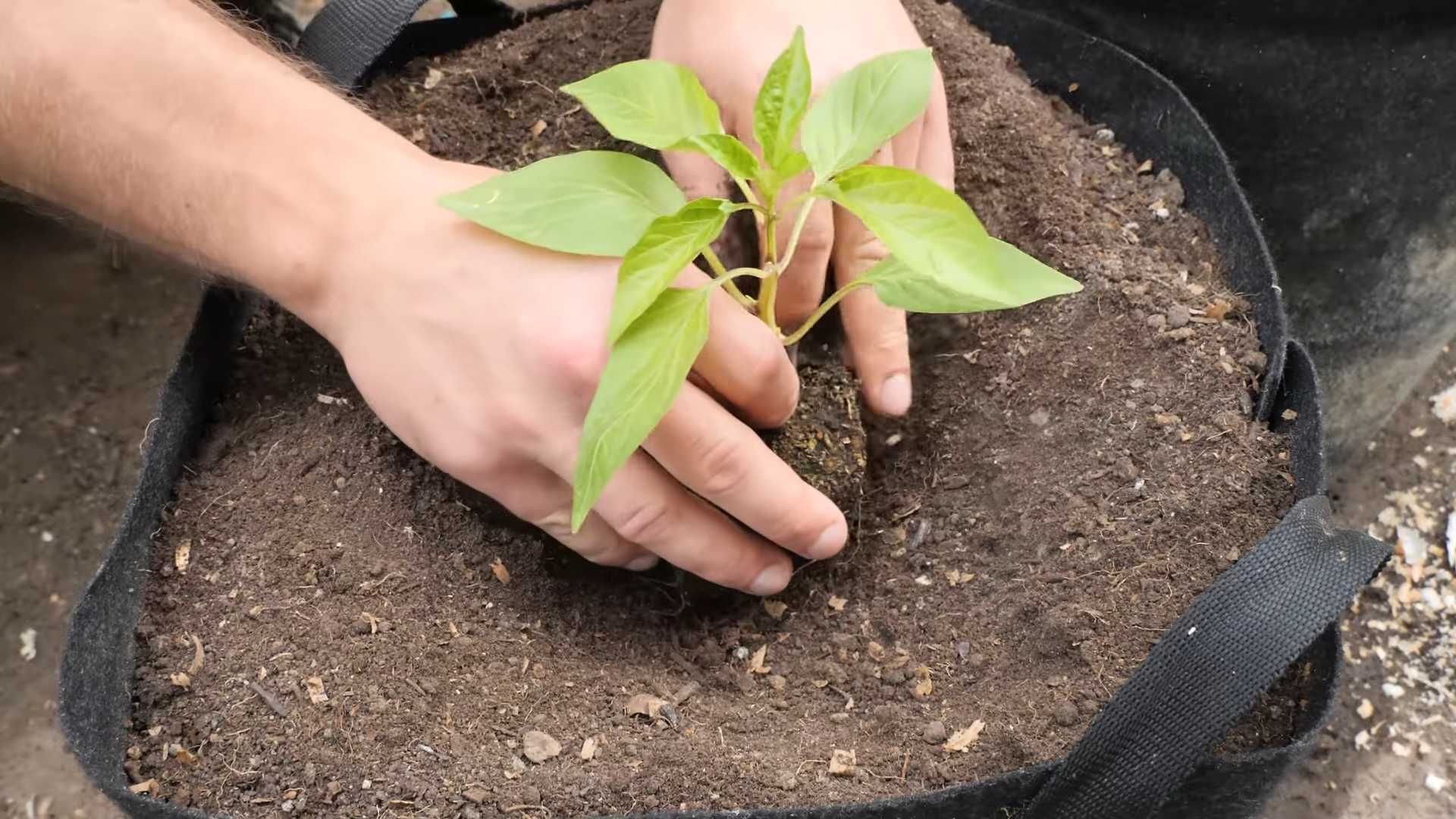
Conclusion
So, there you have it! Growing your own purple bush beans isn’t just a gardening project; it’s an adventure in flavor, color, and self-sufficiency. We’ve walked through the simple steps, from selecting the right seeds to harvesting those vibrant, nutrient-packed pods. But why is this DIY trick a must-try?
First and foremost, the taste. Freshly picked purple bush beans offer a crispness and sweetness that you simply can’t find in store-bought varieties. The flavor is intensified by the satisfaction of knowing you nurtured them from seed to table. Beyond the taste, the visual appeal is undeniable. Imagine adding a pop of deep purple to your salads, stir-fries, or even as a standalone side dish. They’re a conversation starter and a beautiful addition to any meal.
But the benefits extend beyond the aesthetic and culinary. Growing your own food, even something as simple as purple bush beans, connects you to the natural world. It’s a therapeutic activity that reduces stress and promotes a sense of accomplishment. Plus, you’re in control of what goes into your food. No pesticides, no hidden ingredients, just pure, wholesome goodness.
Ready to take your purple bush bean growing to the next level? Consider these variations:
* **Succession Planting:** Plant new seeds every two to three weeks for a continuous harvest throughout the growing season. This ensures you always have fresh beans on hand.
* **Companion Planting:** Plant your purple bush beans alongside other beneficial plants like marigolds (to deter pests) or carrots (which improve soil health).
* **Vertical Growing:** If you’re short on space, try growing your purple bush beans in containers with trellises. This not only saves space but also adds visual interest to your garden.
* **Seed Saving:** At the end of the season, allow some of your best-looking beans to dry on the plant. Harvest the seeds and store them in a cool, dry place for planting next year. This is a great way to preserve your favorite varieties and save money.
* **Experiment with Varieties:** While we’ve focused on purple bush beans, there are many different varieties available. Try different shades of purple, different pod shapes, and different flavor profiles to find your favorites.
We’ve covered the basics, but the real learning happens when you get your hands dirty. Don’t be afraid to experiment, adapt, and learn from your mistakes. Gardening is a journey, not a destination.
So, grab some seeds, find a sunny spot, and get ready to experience the joy of growing your own purple bush beans. We’re confident that you’ll be amazed by the results.
Now, we want to hear from you! Have you tried growing purple bush beans before? What are your favorite tips and tricks? Share your experiences in the comments below. Let’s build a community of passionate gardeners and inspire others to embrace the joys of homegrown food. And don’t forget to share photos of your beautiful purple bush bean harvests! We can’t wait to see what you create. Remember, the key to success is to start small, stay patient, and enjoy the process. Happy gardening!
Frequently Asked Questions (FAQ)
What are the best conditions for growing purple bush beans?
Purple bush beans thrive in well-drained soil and require at least six hours of sunlight per day. The ideal soil pH is between 6.0 and 7.0. Before planting, amend the soil with compost or other organic matter to improve drainage and fertility. Consistent moisture is crucial, especially during flowering and pod development. Avoid overhead watering, as this can lead to fungal diseases. Drip irrigation or soaker hoses are the best options.
How long does it take for purple bush beans to mature?
Purple bush beans typically mature in 50 to 60 days from planting. However, this can vary depending on the variety, climate, and growing conditions. Keep an eye on the pods; they’re ready to harvest when they’re firm, plump, and easily snap off the plant. Regular harvesting encourages continued production.
What are some common pests and diseases that affect purple bush beans?
Common pests include aphids, bean beetles, and spider mites. These can be controlled with insecticidal soap, neem oil, or by handpicking. Diseases like powdery mildew and bean rust can be prevented by ensuring good air circulation, avoiding overhead watering, and using disease-resistant varieties. Crop rotation can also help to reduce the risk of soilborne diseases.
Can I grow purple bush beans in containers?
Yes, purple bush beans are well-suited for container gardening. Choose a container that is at least 12 inches deep and wide to allow for adequate root development. Use a high-quality potting mix and ensure the container has good drainage. Water regularly and fertilize every few weeks with a balanced fertilizer. Consider using a trellis or support system, especially for taller varieties.
How do I know when to harvest my purple bush beans?
Harvest your purple bush beans when the pods are firm, plump, and easily snap off the plant. They should be fully colored but not overly mature or tough. Regular harvesting encourages continued production. Overripe beans can become tough and stringy.
Why are my purple bush beans not turning purple?
Several factors can affect the color of your purple bush beans. Insufficient sunlight, poor soil conditions, or nutrient deficiencies can all contribute to a lack of color. Ensure your plants are receiving at least six hours of sunlight per day and that the soil is well-drained and fertile. You can also try adding a fertilizer that is high in phosphorus to promote flowering and pod development. Also, make sure you have planted a variety that is actually supposed to be purple. Some varieties may be more green than purple.
Can I eat the purple bush bean leaves?
While the pods of purple bush beans are edible, the leaves are generally not recommended for consumption. They can be bitter and may contain compounds that are not easily digested. It’s best to stick to eating the pods.
How do I store purple bush beans after harvesting?
Freshly harvested purple bush beans can be stored in the refrigerator for up to a week. Place them in a plastic bag or container to prevent them from drying out. For longer storage, you can blanch and freeze them. To blanch, boil the beans for 2-3 minutes, then immediately transfer them to an ice bath to stop the cooking process. Drain well and freeze in freezer-safe bags or containers.
Are purple bush beans more nutritious than green beans?
Purple bush beans contain anthocyanins, which are powerful antioxidants that give them their vibrant color. These antioxidants have been linked to various health benefits, including reducing the risk of heart disease and cancer. While both purple and green beans are nutritious, purple beans offer an extra boost of antioxidants.
What are some good recipes for using purple bush beans?
Purple bush beans can be used in a variety of dishes. They’re delicious steamed, sautéed, stir-fried, or added to salads. Try them in a simple side dish with garlic and olive oil, or add them to a vegetable medley with other seasonal produce. They also make a colorful addition to soups and stews. Don’t be afraid to experiment and get creative in the kitchen!

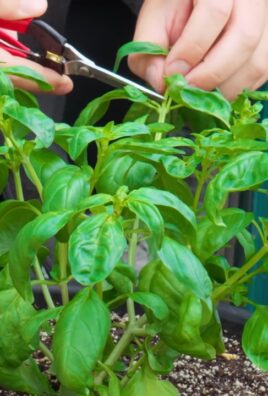
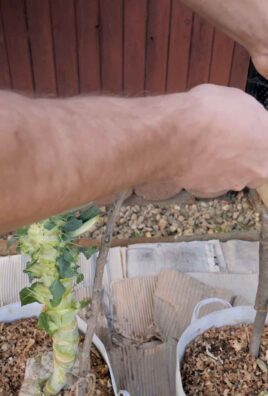
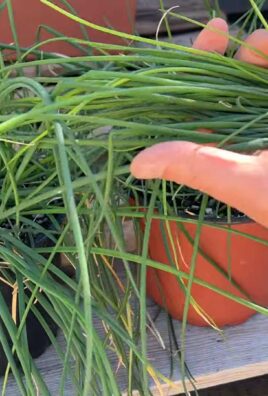
Leave a Comment